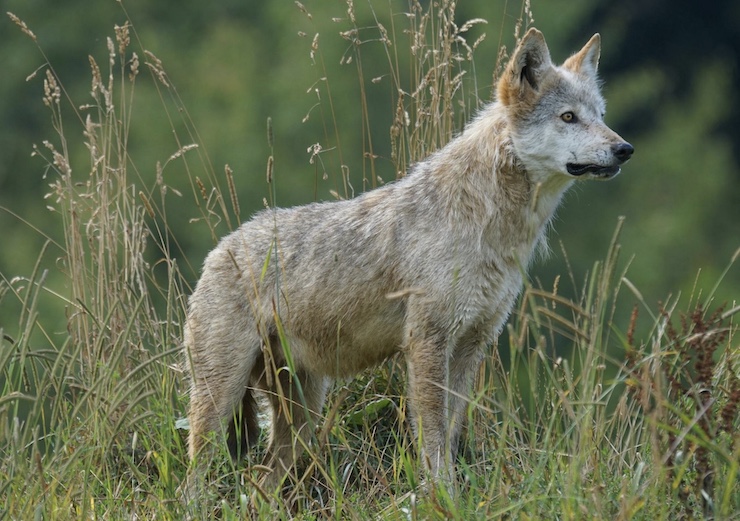
Scarlett Johansson and Adam Driver are two of the biggest stars in Hollywood. They were both nominated for lead acting Oscars for their performances in the same film, Marriage Story. Directed by Noah Baumbach in 2019, Marriage Story is a raw and emotionally charged drama that explores the unraveling of a marriage. Their powerful performances captured the complexity of love, resentment, and loss, earning both actors critical acclaim and Oscar nominations for bringing such intimate, human roles to life with depth and authenticity.
This film is once again bringing the duo together in an unexpected way, frightening wild wolves. The red wolf (Canis rufus) is a critically endangered species native to the southeastern United States. It was placed on the endangered species list in the 1960s, with fewer than 20 red wolves remaining in the wild by the late 1970s, prompting the start of a captive breeding program.
The wild population was reintroduced to eastern North Carolina in the early 1980s but has fluctuated since then. As of early 2025, the estimated wild population is between 17 and 19 wolves, with about 270 individuals living in captivity across breeding facilities in the United States. Conservation efforts continue to focus on increasing wild numbers and protecting the species for the future.
Although red wolf populations remain critically endangered, they continue to pose occasional challenges for livestock ranchers. According to the United States Department of Agriculture (USDA), red wolves have been responsible for killing livestock animals over the past 15 years in northeastern North Carolina. Mary Rickert owns the Prather Ranch in Northern California, where she has lost up to 40 calves to wild wolves. “It’s basically like driving through Burger King,” Mary said of the wolves, “easy pickings for them.” This ongoing conflict has prompted efforts to balance wolf recovery with agricultural interests in the region by leveraging drone technology.
Due to the fragile status of wolf populations, ranchers like Mary are partnering with the USDA to use drones as a non-lethal way to deter wolves without risking further harm to the species. It is a tactic that one researcher in Montana has found to be useful in deterring grizzly bears to keep people, property, and animals safe. Wesley Sarmento outlines how he used drones to scare away bears in his paper titled Bear Deterrence with Scare Devices: A Non‐Lethal Tool in the Use‐of‐Force Continuum. “Drones were highly maneuverable and capable of precisely moving a bear exactly where I wanted the individual to go,” Wesley writes. “Several times bears attempted to dodge the drone and run in an errant direction, however, the speed and dexterity of the drone allowed for quick corrective actions to alter bear escape paths to be more suitable.” This is similar to how the USDA is addressing the issue of wolves preying on livestock.
The USDA is now experimenting with drones equipped with thermal imaging cameras and speakers. The drone’s camera is enabled with AI that allows it to recognize a wolf regardless of lighting conditions or obstacles like vegetation. When the camera identifies a wolf, the operator can then fly the drone at a safe distance from the animal. However, because the drone must remain far enough away to avoid disturbing or stressing the wolf physically, the speaker becomes the next line of defense.
Once in position, the drone’s speaker blasts sounds that would be unnatural in the environment. These include sirens, AC/DC’s rock anthem Thunderstruck, and a pivotal scene from the movie Marriage Story. In this particular scene, the characters portrayed by Scarlett Johansson and Adam Driver are engaged in a heated argument, yelling back and forth in an emotionally intense exchange. It was exactly the kind of human interaction that USDA District Supervisor Paul Wolf was looking for.
The sounds that the ironically named Mr. Wolf sought to broadcast through the drone had to be effective in scaring off wolves, not encouraging curiosity or boldness. “I need the wolves to respond and know that, hey, humans are bad,” Paul said. The idea is to create enough discomfort to disrupt the wolves’ behavior without causing harm. This non-lethal method allows ranchers to protect their animals while supporting broader efforts to preserve the critically endangered red wolf population. The emotional intensity that earned Johansson and Driver critical acclaim in Marriage Story is now serving an unexpected purpose, aiding conservation efforts that seek to protect both vulnerable wildlife and the livelihoods of local ranchers.
|